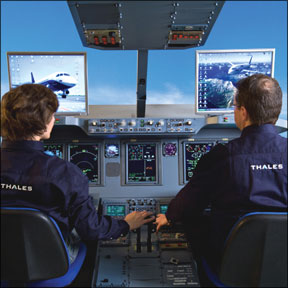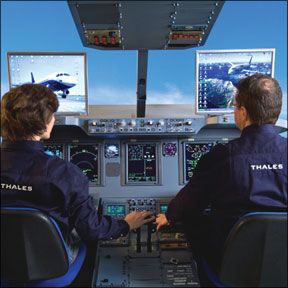The FAA rightly has taken its lumps on many things, leading to a healthy dose of skepticism among many in the industry whenever the agency tries something new. This is especially true whenever theres a rulemaking activity affecting general aviation training. I knew this, of course, when I began work as manager of the FAAs General Aviation and Commercial Division. After a few months in my new job, 288 I began surveying the landscape, which included the Garmin 430 phenomenon (I installed one in my Bonanza, as well as a multifunction display and weather data link) and a visit to Cirrus highlighted the coming “glass cockpit” revolution. At the same time, I was examining accident trends and causality. It soon became apparent the standard accident causes werent getting to the root of general aviation fatal accidents. One of the reasons is our current training paradigm originated just before World War II and is ill-equipped to address current safety issues or prepare general aviation pilots to use emerging technologies. Late in 2002, I wrote a paper advocating a new training approach, which became the FAA Industry Training Standards (FITS). What Is FITS? Its important to point out what FITS is about and how it contrasts with the previous (actually still mostly in place, unfortunately) pilot training philosophy. The old training philosophy was maneuver-based, top-down (i.e., spoon-fed by the instructor), and designed to teach the student to pass the knowledge and practical tests. It is a holdover from the 1939-1941 Civil Pilot Training Program, which was designed to prepare a large number of pilots to be expended in the coming war. The FITS philosophy, on the other hand, emphasizes higher-order pilot skills (risk management, single-pilot resource management, automation management), uses new teaching concepts (scenario-based training, student-centered learning), and focuses on operating modern (i.e., technically advanced, or TAA) aircraft in a modern NAS. Its also important to note FITS was never designed only for TAAs, as some observers presume. Quite simply, FITS concepts (especially risk management) easily can and should be employed in J-3 Cubs and steam-gauge Cessna 172s to produce the same level of safety as a glass cockpit Cirrus, albeit at greatly reduced levels of utility. Implementing FITS The FITS program gathered momentum throughout 2002-2005. From the beginning, there was some opposition. For example, the Aircraft Owners and Pilots Association (AOPA) was concerned FITS would be a form of “back-door rulemaking,” without the benefit of public comment. But the main obstacle to FITS implementation was the deeply ingrained training culture in the general aviation community, the result of doing things the same way for 60-plus years. This also included resistance from within the FAA: The agencys Regulatory Support Division in Oklahoma City raised a number of objections, including the “impossibility” of creating scenario-based testing and evaluating skills such as risk management. Research conducted by Center for General Aviation Research (CGAR), a group of FAA-sponsored aviation universities, quickly generated some interesting findings. First, the airline community and the military had discovered and validated FITS concepts years ago, and were using them with success. The airlines now have the Advanced Qualification Training (AQP) and the military employs “mission-based” training. The CGAR researchers then proceeded to validate concepts such as scenario-based training, risk management training, and practical tools such as a methodology for including or removing maneuvers from the practical test standards. Middle Tennessee State University (MTSU), under the leadership of Dr. Paul Craig, developed an integrated private-instrument curriculum reducing training time but producing students who performed as well on the practical test as students trained under traditional methods. By June 2004, some innovative courseware providers and smaller training entities had begun using FITS concepts with success and reported on their results. A big step forward took place when Cessna converted their piston-engine factory training to FITS and began integrating its concepts into their Cessna Pilot Centers (CPC). Other manufacturers were taking similar actions. To facilitate a “seal of approval” for FITS, we implemented a temporary process for FAA “acceptance” of industry-developed curricula conforming to program concepts. One reason this task remained within the agency? There was no industry body able to do the job. Yet, we could not move the acceptance process out to the field until FAA inspector guidance and training was developed. This was necessary because FAA inspectors need reference and guidance material to help eliminate uncertainty among the aviation public. After FITS In April 2005, I retired from the FAA. Some in industry expressed concerns FITS would disappear, but they were wrong. Thats both the good news and the bad news. The organization has continued to maintain FITS and also has created a process for FITS “acceptance” of curricula by FAA field inspectors. On the other hand, FITS would be more successful with industry leadership, especially when considering curricula development. In fact, some in industry-perhaps unsurprisingly-report the “acceptance” process has become excessively bureaucratized at the FAA, leading to a lack of innovation. It has also caused some developers to forego the acceptance process altogether. This is good for curriculum innovation but bad because it does not result in any sort of assurance FITS concepts were integrated fully into curricula. In the long run, excessive bureaucratization of training program acceptance does little to promote wider implementation of FITS concepts. No surprise there. To accomplish this, the general aviation industry “establishment”-including leading training providers-must embrace and more widely adopt FITS concepts instead of ceding leadership in this area to smaller training schools and the university community. But the real question should be what comes after FITS. In the final analysis, the best way to sunset FITS would be for industry and the FAA to finish the job of updating doctrine, standards and curricula to ensure the infrastructure holding together our training system is up to the challenges of the 21st century. It also would be useful for industry and the FAA to recognize the huge influence the training system has on general aviation accidents, and use a modernized system as a means to reduce the fatal accident rate. What should a replacement for FITS look like? That question is the subject of a new effort being assembled by the Society of Aviation and Flight Educators (SAFE), which has proposed a collaborative effort among OEMs, courseware providers, organizations/trade associations, university aviation programs and FBOs, insurance providers and regulatory agencies to reform our national flight training system. Full disclosure: I chair the SAFE committee planning an industry-wide symposium in May 2011, “Securing the Future of General Aviation through Pilot Training Reform.” The effort mounted by SAFE is based on the understanding aviation instructors often represent the first and last lines of defense to motivate pilots to continue in aviation. Instructors directly influence our safety, security and environmental mindsets as well-influence with significant and widespread ramifications both inside and outside general aviation. At the same time, AOPA has rolled out its Flight Training Student Retention Initiative, which the association says is designed to identify reasons why student pilots drop out and develop ways to help more of them complete their training. The AOPA effort is working from focus-group research indicating educational quality has a huge impact on student completion rates. Further, the quality of a flight-instruction experience is directly related “effective instruction; organized lessons; flight school policies that support and maximize instructor effectiveness; providing additional resources; and test preparation.” At the conclusion of a day-long meeting held in November at AOPAs Summit in Long Beach, Calif., association President and CEO Craig L. Fuller noted, “The work done by the participants in the Flight Training Summit is important and valuable. But it is a first step, and todays meeting was the first of many discussions we, as an industry, must have if we are to identify and implement solutions that help student pilots earn their certificates. AOPA will do its part to facilitate those discussions and share the findings, but it will take a long time and a lot of collaboration to fix problems that have become so deeply entrenched,” Fuller concluded. Additional background on the AOPA Flight Training Student Retention Initiative and SAFEs pilot training reform symposium can be found in the sidebar on the opposite page. Whats Next? Like FITS, which remains in place at the FAA and throughout the industry, the gestation of a new flight-training paradigm wont come easily or quickly. The program announced by AOPA targets the problem of student starts and retention rates, while SAFEs efforts are focused more on delivering an improved training product, in addition in industry growth. In subsequent articles, well provide updates on how AOPAs, SAFEs and other programs are progressing, as well as examine what else might be needed to enhance safety and improve GAs accident rate. Bob Wright holds an Airline Transport Pilot certificate with four type ratings, including the Eclipse 500 single pilot, has more than 9100 hours and holds a Flight Instructor Certificate with single and multiengine, instrument and glider ratings. The opinions expressed in this article are not necessarily those of any client he represents.




